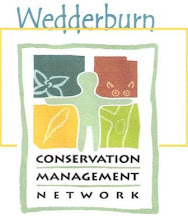Mistletoe is often
regarded as a parasite of shrubs and trees however Mistletoe produces its
energy through photosynthesis and functions only in a semi-parasitic mode. Continuing studies are demonstrating the
importance of mistletoe for biodiversity in degraded bushland. (Watson D. M.
& Herring M 2006)
Too often we see
the wonders of fauna or flora as isolated observations and miss the complexity
and beauty of the co-evolutionary relationships. Mistletoe is a good example to illustrate some
of these inter-dependencies.
At least four
species of Mistletoe occur around the Wedderburn/Mount Korong locality and one, the Grey Mistletoe Amyema quandang can be seen on
Cootamundra Wattle Acacia bayleania in gardens around Wedderburn
and is common on Dean’s Wattle Acacia
deanei ssp. paucijuga and Wallowa
Acacia euthycarpa around Mount
Korong. Images in Figs 1 to 10 were
taken near Mt. Korong
The flower
structure of Mistletoe is designed to transfer pollen to and from the head of
visiting honeyeaters such as New Holland Honeyeaters Fig 3. commonly seen
attending the flowers. Mistletoe Birds
follow the fruiting cycle of mistletoe species and consume the fruit. The digestive system of Mistletoe Birds is
modified to facilitate rapid transit of ingested fruit and the bird’s behavior
is adapted to increase the chance of seed falling to a suitable growth position
on a host plant. These birds perch atop the host tree and
frequently turn parallel to the perch twig prior to voiding the seed which
emerges like a necklace of pearls, to slowly drip down through the foliage Fig
4.
Figs 5 to 10
illustrate some of the Lepidoptera dependent on mistletoe as the food plant for
their larvae.
Fig 10 is of an Ogyris butterfly whose larvae are
dependent on the attendance by certain ant species. The butterfly has brilliant iridescent
metallic blue upper wing surfaces that flash in the sunlight and are hidden
from view as the insect keeps wings together when purchased on the mistletoe.
The obvious thought
to ponder when considering these examples of interdependent associations is which
species is dependent on which other species for ongoing function of this
component of the ecosystem?
Article – D. Stewart
Images in Figs 1 to 10 were
taken near Mt. Korong and Wedderburn by D. Stewart.


No comments:
Post a Comment